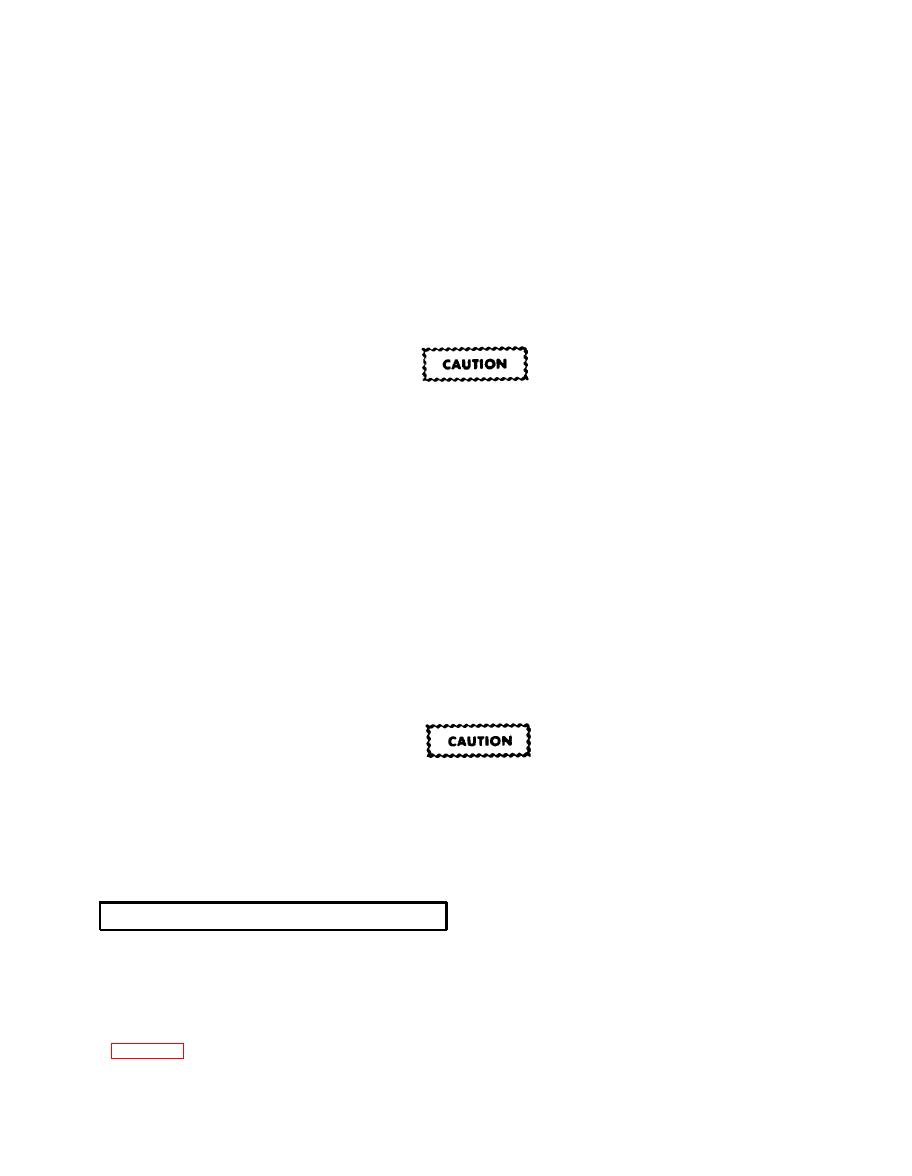 |
|||
|
|
|||
|
Page Title:
OPERATIONAL CHECKS |
|
||
| ||||||||||
|
|
 TM5-1420-347-14
j. Turn the TEMPERATURE SELECTOR (thermostat) knob to the full HEAT (clockwise) position. Then turn
the MODE SELECTOR switch to LOW HEAT, Place your hand in the airflow from the conditioned air supply
louver and feel for a temperature rise. When the supply air temperature has reached a relatively stable level,
turn the MODE SELECTOR switch to HIGH HEAT and feel for a further temperature rise. Next, turn the
temperature thermostat control knob to the fully COOLER (counterclockwise) position. Feel that supply air
temperature drops to approximately the same relatively stable level previously noted in LOW HEAT. Finally,
turn the MODE SELECTOR switch to LOW HEAT and feel the discharge air temperature drop to ambient level
(room temperature).
NOTE
The temperature thermostat control has an effective functional range between 60F and 90F (16C
and 32C). In extreme conditions when ambient air temperature is below 60F (16C) or above 90F
(32C), the operation in either LOW HEAT or HIGH HEAT mode will vary from that described above.
If a knocking or pounding noise is heard when the compressor starts in the following check,
immediately turn the MODE SELECTOR out of the COOL position. Leave input power connected and
wait at least two hours before attempting another start in COOL mode.
k. Turn the TEMPERATURE SELECTOR control knob to the fully WARMER (clockwise) position, then turn
the MODE SELECTOR switch to COOL. Note that the evaporator and condenser fans start immediately and that
the compressor starts approximately 30 seconds later. Hold your hand in the airflow from the conditioned air
supply louver; there should be no change in temperature. Now turn the TEMPERATURE SELECTOR control
knob to the fully COOLER (counterclockwise) position and feel the supply air temperature begin to drop almost
immediately. Leave controls in the present position and perform the next check.
l. After 15 minutes of operation, check the sight glass and check the refrigerant condition. The sight glass is
equipped with a center indicator that is moisture sensitive. Dry refrigerant is indicated by green, it turns to
chartreuse when the moisture content becomes undesirable, and to yellow when the level becomes
unacceptable. Excessive moisture in the refrigerant may damage or possibly destroy the compressor. If the
liquid refrigerant observed in the sight glass has an opaque, milky appearance, or frequent bubbles appear, the
volume of refrigerant is low and the system should be charged. Either moisture or low charge indications
should be reported to direct support maintenance for appropriate refrigeration system action.
Do not operate the air conditioner in the COOL mode if the refrigerant color has reached the yellow
band or if numerous bubbles appear in the sight glass. COOL mode operation maybe continued with
the refrigerant color in the chartreuse band or with only an occasional bubble appearing in the
window, but the sight glass should be rechecked after each four hours of operation to insure that the
condition has not become worse.
m.
Turn the MODE SELECTOR switch to OFF and observe that all air conditioner functions cease.
GENERAL OPERATING PROCEDURES
The Model F9000H-3 air conditioner is designed for operation in a wide range of climatic conditions either
continuously or intermittently. The amount of operator attention required will vary depending on specific local
conditions for each installation. Under usual conditions, the air conditioner will be set up for the appropriate
mode of operation at the beginning of a season and will only need starting and stopping and minor adjustments
for the rest of the season.
Table 2-2 provides the recommended initial control settings to establish the desired mode of operation. Minor
adjustments may be required to obtain the desired mixture of recirculated and fresh air and the airflow patterns
of conditioned air.
2-7
|
|
Privacy Statement - Press Release - Copyright Information. - Contact Us |